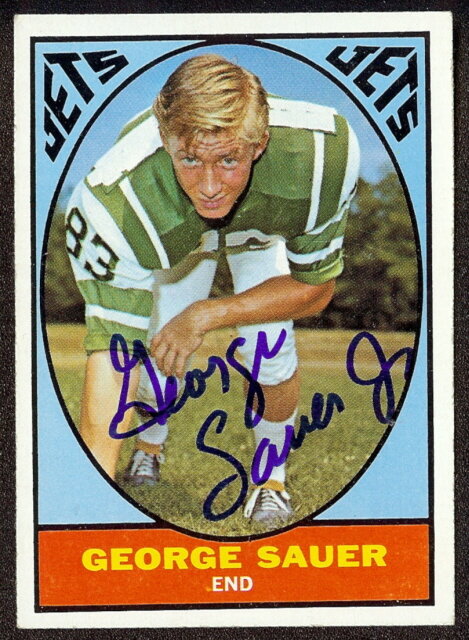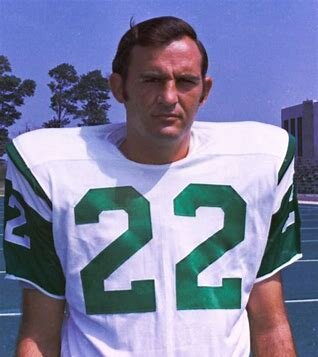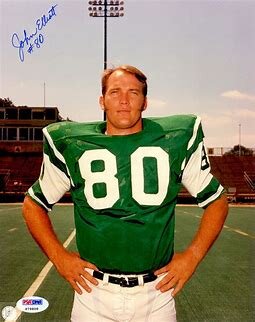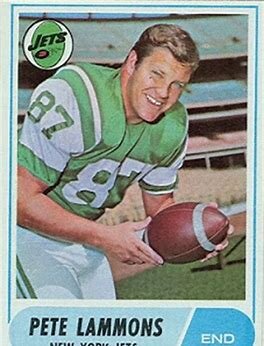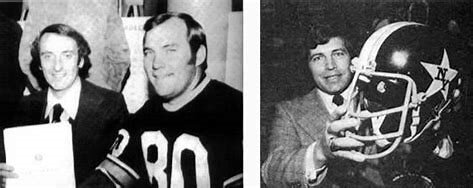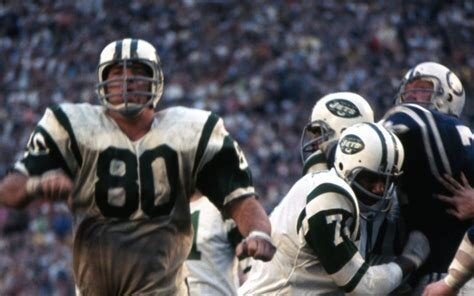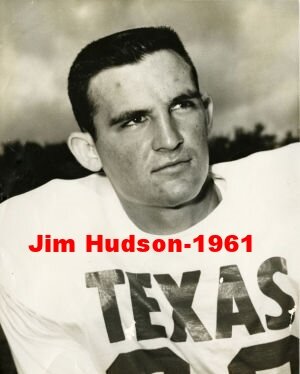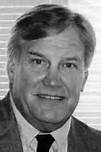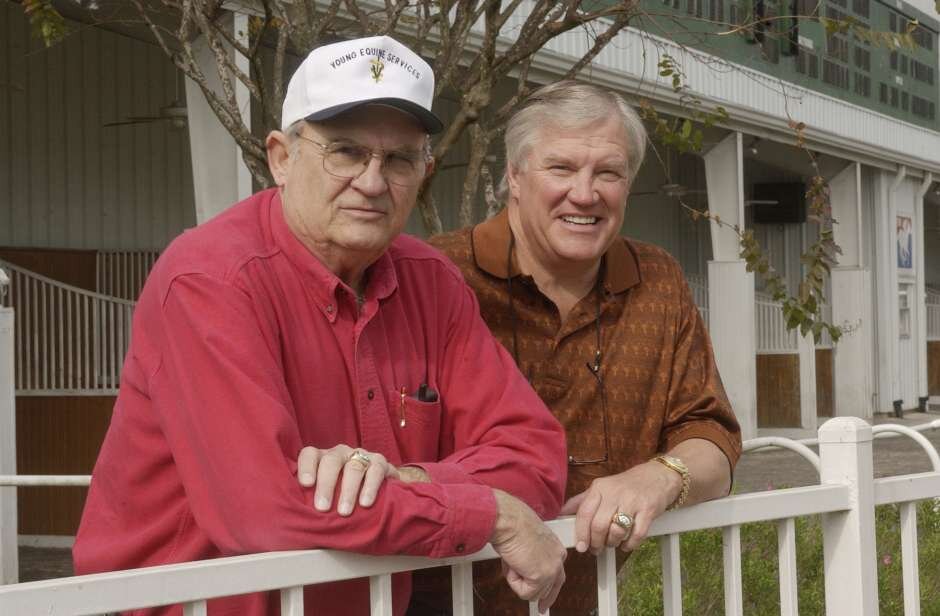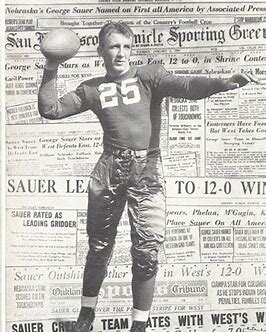From 1969 thru 1994 the University of Texas held the NFL record for the most athletes from one university to win the World Championship.
Longhorns Pete Lammons, George Sauer, John Elliot, and Jim Hudson are Super Bowl and College National Champions. They were 4 of 11 Texans on the Jets roster in 1969. One concerned New York sportswriter said there are "too many peppers (Texans) in the stew." Pete Lammons said, "We kept telling the Jets that if they got enough guys from Texas that we'd win. And sure enough, we did."
The Texas roster recipe had just the right amount of spice to win Super Bowl III. Four Longhorns whose skill set helped the Longhorns win a national championship in 1963 were even better athletes as Jets. Pete says, "All of us wound up being better in the pros than we were at Texas."
Joe Namath also earned a Super Bowl and College National championship. In 1964 at Orange Bowl stadium, the site also chosen for the Super Bowl III championship game in 1969, The Texas Longhorns beat the undefeated Joe Namath led Alabama Crimson Tide. Alabama lost the game by 3 inches when Tommy Nobis stopped Joe on a quarterback sneak late in the 4th quarter. Four Longhorn hot 🔥 peppers - Pete, George, Jim, and John- were part of that victory over Alabama.
New York Jets head coach Weeb Ewbanks, who in 1962 was fired by the Baltimore Colts, was the mastermind behind drafting Texans to form a championship team. Lammons said, "We did bring a little bit of ambiance, I guess, to New York that they didn't have before." "But it was interesting how it all happens." "We're still proud of what we accomplished, of being a part of football history," Lammons said, but "It's arguable whether what we did was the biggest or the best. But you'd certainly have to agree that it's in the top two."
Jet Reunion 2019
At the 50th reunion of the Super Bowl III championship, one of the former Jet players' topics was concussions or what the players who played high school and college ball in the 1960s referred to as "getting your bell rung." Lammons noted that no matter what the conversation was at the reunion, a few players had trouble following along. Pete Lammons said, "Oh Lord. Mercy. We had a lot more hitting in college practices." "I guess that's all part of the licks we took over the years," Jim Hudson and George Sauer paid a substantial price for bell ringing. Each passed away with dementia or Alzheimer's, but those closest to the families whispered to anyone who would listen that CTE was the real culprit.
Not So Super
In 1967 and 1968, the NFL crowned a champion, but the word "Super Bowl" was not part of the professional football lexicon until 1969 when the NFL and AFL played in the first championship game title game. In 2020 fans consider the 1969 Super Bowl championship winner as one of the greatest upsets in American professional football history. But in 1969, many Americans believed it was just another game and not even an event. John Elliot said in an interview" "Back then, there wasn't much hype." Elliott said not a single newspaper, television, or radio reporter interviewed him during his week in Miami. "I don't think we thought we were going to win," Elliott said. "We didn't have anything planned for after the game. We came back to the hotel and said, 'Where's the party?' "There was no party. I was in my room and bed by midnight that night."
Even the Super Bowl Trophy was unimportant. It was more an afterthought of the game with no prestigious significance. John Elliot recalls that he was one of the last team members to check-out of the hotel the day after the super bowl. The hotel desk clerk recognized him and reminded him that no one had picked up the Super Bowl trophy. John put the cup in his car's front seat and delivered it to the team at the airport. He said, "That's the only time I touched the trophy. "Maybe I should have kept it."
On John's trip back home to Texas, he was stopped by a Mississippi police officer for speeding. John said, "I was trying to talk my way out of the ticket when I told the officer I had just played in the Super Bowl. He said, 'What's the Super Bowl?"
The New York Jets, Joe Namath, and 4 Longhorns took professional football to a new level. They set the cornerstone that eventually led to exponential prestige and growth for professional football. Player salaries rose, fan bases grew, and television ratings soared. Many future professional football players would no longer need to procure an off-season job to supplement income. In one year, John Elliott earned $24,000 after he tackled the quarterback behind the line of scrimmage a league-leading 15 times, a feat that decades later earned a Minnesota Viking defensive end a six-year, $74 million deal.
History remembers the day Joe and the Horns pulled off a sports miracle.
But there are also individual stories that need to be told about the 4 Longhorns who made football history twice.
Juan Conde (far right in photo) who was the equipment manager in 1968 shares a story about the Longhorn “Jet” connection. He says “Billy, a fact not well known. Every year during the off season, three of the former Texas players on the Jets’ team would workout at DKR Texas Memorial Stadium.
Juan said, “I would assign them a locker in the Freshmen side of the former Texas dressing room. I would also issue them workout gear. The one fact that I will always remember is when they were ready to leave for training camp, Jim Hudson would always ask me for a pair of our white travel game pants for each of them. He told me they didn’t like the white game pants issued by the Jets. He said they would place the green stripes on the pants. This ritual would occur every year while they played for the Jets, including their Super Bowl game. With Coach Royal’s permission, I would give Jim the game pants. I never asked Jim why they didn’t like the white game pants the Jets issued them.”
Longhorn John Elliot as a rookie is a super bowl champion
John doesn't get the notoriety he deserves," said Pete Lammons. "For a while, he was as good a defensive tackle as there was in the game. We all thought very highly of him."
During his professional career, John was a right-defensive tackle and defensive-end who appeared in 85 regular-season games. In 1970 he was first-team All-pro. In other years John was recognized by the AFL as a two-time All-Star and a Pro Bowl participant.
Elliott had three tackles in the Super Bowl game. On the Colts' first play from scrimmage— Big Bad John (as he was known on Jets radio broadcasts) pursued and tackled the Hall of Fame receiver John Mackey. According to author Lederer in Beyond Broadway Joe, Elliott pulled off a "superhuman defensive play" by fighting off not one, not two, but three blocks. He then made a solo tackle on Colts running back Tom Matte for just a one-yard gain, And when he wasn't making tackles, Elliott bedeviled quarterback Earl Morrall."
In honor of John, his home town of Warren, Texas, dedicated a new field house to him. "I think this is unique for such a small community to have someone like this come from Warren," said Kevin Barbay, Warren's head football coach and athletic director.
JIM HUDSON was a very talented athlete in many sports
Jim was a talented athlete with speed, strength, size, and a work ethic. Jim’s roommate, Tommy Lucas, says in high school, he excelled at Football, Basketball, as well as State Champion Shot Put and Discus.” Texas Defensive coordinator Coach Campbell said he was one of the best high school athletes he ever recruited. He was so good at basketball that John Wooden offered him a scholarship to play basketball for UCLA. He chose to play football at Texas.
As a Longhorn, Jim Hudson's various talents included wide receiver, running back, defensive back, punt returner, and quarterback. In the 1963 National Championship year, Jim led the team in interceptions, and in the Cotton Bowl game against Navy, he was credited with five solo tackles.
In 1964 Jim won the starting quarterback position at Texas but got hurt early in the season and played very little until the Orange Bowl game in 1965 against Alabama. Coach Royal's decision to play Jim in the game was brilliant. After entering the contest, Jim threw a perfect spiral to George Sauer for a 69-yard touchdown.
Neither the NFL nor AFL drafted Jim, but his performance in the Alabama game impressed the New York Jet scouts so much they signed him to a professional contract. As a Jet from 1966–69, he intercepted 14 passes. In 1968 he earned All-League, recording 85 tackles and five interceptions.
Tommy Lucas, Jim's roommate at Texas, said, "As a New York Jet, he was a strong safety playing man to man coverage versus tight ends that were often much bigger." "He was an aggressive tackler and made a lot of tackles near the line of scrimmage when playing goal-line defense." "In my opinion, this was probably the reason later on that he was the victim of CTE." He was a very dear friend that I affectionately referred to as "Huddy Buddy. "
In the Super Bowl game, Jim was assigned Hall of Fame tight end, John Mackey. Mackey dominated the NFL highlight reels in 1968, but in Super Bowl III, John Mackey had no highlights. Jim Hudson held Mackey to three catches for 35 yards. Jim is also credited with intercepting a pass on a Colts trick play that stopped a momentum-killing drive and four solo tackles against the Colts.
After six seasons and three knee operations, and chronic back issues, Jim retired.
Roy Jones remembers Jim Hudson.
I was George Sauer's roommate in Moore-Hill Hall and senior manager of the 1963 Longhorn team. One of my favorite memories of Jim was a freshman game (before freshmen could play varsity). We got the ball at our one, and on first down, Jim ran a quarterback sneak to have a little room to operate. The QB sneak went for 99 yards and a Shorthorn TD.
Pete Lammons played for three hall of fame coaches.
Pete was a superior athlete blessed with Hall of Fame-caliber coaches. Bum Phillips at Jacksonville high school, Darrell Royal at Texas, and Weeb Eubanks in New York all touched Pete Lammons's life.
One Longhorn coach described Pete as having "a sweet smile and a mean disposition." Leaving Texas with many honors and a National Championship, he was drafted in the 4th round of the New York Jets' 1966 AFL draft.
Fellow Longhorn teammates Jim Hudson and George Sauer were already on the Jets team, and they did their best to help Pete transition from college to professional football.
Lammons received his share of honors as a Longhorn and a Jet, but Pete's career story is about more than football facts.
The origin of the "Guarantee" to Win said by Joe Namath.
Namath is credited with the "guarantee" to beat the Colt's statement, but Pete Lammons is the inspiration for the quote. Lammons says, "we were going to be 18-point underdogs, but I don't think many people (on the team) understood it or cared about it." "We started watching a film of the Colts on the Tuesday before the game. When we finished, I told our offensive coordinator, "if we keep watching these films, we're gonna get overconfident." "Namath remembers Pete's comment and shares that story on an NFL documentary. Namath said, "We all laughed, giggled and chuckled, but there was that underlying confidence." A couple of days later, Namath, during a banquet speech, guaranteed a Jets victory.
In the game, Pete did his job of guaranteeing the win by catching three balls and delivering bruising blocks that paved the way for the Jets' win.
Tom Pickryl shares a Pete Lammons story:
As a kid, I was so proud to see those 4 Longhorns star in that Super Bowl. They were my heroes. When I was fifteen years old, I had my knee operated on by Dr. John Buckley, who did all of the joint surgeries for the UT football team. One day while I was waiting for Dr. Buckley, Pete Lammons walked in, and I was so excited I was almost speechless. He was so gracious to a pimply-faced first-year high school student. I will never forget that great player and a great guy.
George Sauer
Visit the link below for George Sauer’s bio.
From Super Bowl III to Super Bowl XXVIII the longhorns held the record for the most college football athletes from the same University who won both a national and Super Bowl Championship.
Miami Hurricanes and the Dallas Cowboys established the new record in 1993.

